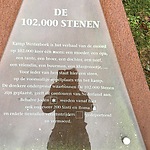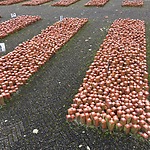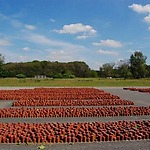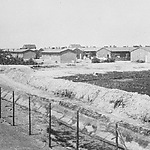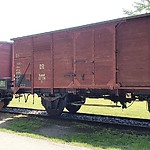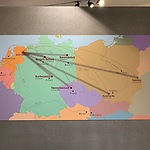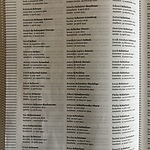Ilse and Ruth were the only survivors of the household of Jakob and Helene Scheuer.
Westerbork was established in 1939 to house Jewish refugees who had entered The Netherlands illegally to provide them shelter. When the Germans invaded Holland on May 10, 1940 there were about 750 Jewish refugees housed In Westerbork. The German occupiers decided to house all Jewish refugees in Kamp Westerbork. Until that time there were 3 Jewish refugee Camps in the Netherlands, Reuven in the south, Hoek of Holland in the west and Westerbork in the North. The February Strike in 1941 was a General Strike in German occupied Netherlands. The Strike was organized by the communist party of the the Netherlands in the defense of persecuted Jews and against the anti Jewish measures and activities by the Nazi’s. Right after this strike the Nazi’s began separating the Jewish populations from the Dutch. In July of 1942 the Leadership of Camp Westerbork was taken over by the Nazi’s. There was a Jewish Adminstrative Counsel who was in charge of supervision of the Camp Westerbork. During that time the Germans put up a fence with barb wire and watch towers around the camp.
The Nazi’s had taken over a well organized refugee camp Before it became a transit camps for Jewish people to be deported to the concentration camps.The camp had barracks with 3 bunk beds for sleeping, a dentists and dokter’s office, even a small hospital. For the children there was a school and a crèche. Westerbork form 1939 till 1942 was organized by the residents, There were concerts and play’s, on Saturday’s there was a soccer match. During the week there was work for man and women. The Germans wanted to creat the illusion that life was normal and that life was the same when they were deported to other camps.
On September 5, 1942, the family discussed what was in the best interest of the family to stay together in a time were things around them became more and more difficult. They decided that it was better to stay together as a family and voluntarily joined there father at Westerbork. ( Jakob Scheuer as a refugee worked at Camp Westerbork). The head of the administration was a good friend and LS colleague of Jakob. Scheuer. There reasoning for this was, that it was safer for them in Westerbork than it would be in Bilthoven. The rest of the Daniel family arrived a short time later at Camp Westerbork. (Grandmother, uncle’s and aunts as well as cousins). The family was save until the beginning of 1944 when all were deported to various concentration camps all died during that time. The only survivors where Ilse and Ruth.
Enrst (the son) was arrested in January of 1944, bes cause he forget to take his cap off for a Camp Guard at Westerbork. As a result of this small incident Ernst was put on the de deportations list of the weekly transports to Germany. The family and other people that lived at the camp did not know what the end destination was of these transports. Jakob Scheuer (the father) decided that when Ernst was put one of the weekly transports, there family would go with him. The family was put on the weekly transport of January 18, 1944.
Since Jakob Scheuer had been a soldier in the German Army during World War I, During that time he was homered with the Iron Cross. Because of this the Kamp Administration had decided to sent the family to Theresienstadt, Czechoslovakia. They were there from January 18 till May 16, 1944. During there stay at Theresienstadt the Nazi’s had given permission for a delegation of the Red Cross to visit Theresienstadt. Because of this visit the Nazi’s decided to clean and spruce up the Theresienstadt but even during that city was overcrowded with people. The population had to be drastically reduced. They did this by sending 7 train deportations with a total of 17.517 Jewish people were sent to the gas chambers in Auschwitz II (Birkenau), Polen. Also the family of Jakob Scheuer was selected for one of these transports, they left with the transport of May 16, 1944. They arrived on May 18, 1944, at Auschwitz II (Birkenau) and were there until juli of 1944. Upon arrival the selection and separation was done between men, women and children. However Helene with her children, Ilse and Ruth stayed in Auschwitz. Ernst was selected for forced labor and deported on July 3 to Swartzheide (Senftenberg) a sub camp of Sachenhausen. He worked there in a military factory. The living condition there were extremely bad. The Camp was known for the sadistic Camp Guards they let the prisoners work until they dropped dead. Ernst died on April 16, 1944, six days before the the liberation of the Camp on April 22, 1944.
One afternoon, during the first couple of ears when they were at Camp Birkenau, Ilse and Ruth recognized there father. During this short time they were able to meet without detention form a Camp Guard. Jacob Scheuer was able to give his daughters the contact information of cousins in the U.S.A., together with a small piece of paper that had contact information about other family members and friends living in the U.S.A. He told his daughters that they were young and would survive the War. Jacob than gave his daughters his blessings with the words of the traditional Hebrew prayer that is being prayed each Sabbath in the Synagogue and at home. “ May G-d make you like Sarah, Rebecca, Rachel and Leah. May G-d bless you and watch over you. May G-d shine His face toward you and watch over you and show favor. May G-d Be favorable disposed toward you and grant you peace. They quickly said goodbye to there father. That was the last time they saw him. According to American and Dutch Red Cross records he was gassed on July 7, 1944. Or k owing what would happened to them they were marched to showers, they gotten a towel, once in the showers a heavily metal door closed the shower rooms. The ceiling of the room contain cylinder openings just like shower heads, but no water came out. We now know that the shower room was one of the gas chamber and later learned that due to the large amount of people being gasses they had run out of gas cylinders. We realized much later that we were to have been gassed. After some a long time the doors opened back up and the led us out and were send for a physical examinations and send to another selection process to see if you were fit enough to do forced labor. People were being directed left and right, Ruth noticed that the people on the right were healthier look and told Ilse that they needed to jump to the line that was selected healthier. They could have been shot on the spot if the Germans would have seen them doing that. During that process Helene (the mother) was separated form the children. It was assumed that she was selected to work and later died. according to American Red Cross records Helene doek on February, 1945 in centeral Europe. Helene, her husband Jakob, the children and other family members were in Auschwitz II (Birkenau) for a relatively short period of time. But they were there long enough for the family members to die in Auschwitz for that short period of time. For no reason other than that they were Jews. Isle and Ruth survived, but they both carry memories of that horrific place, which even today is a grotesque testament to the very depts. of human cruelty.
In July of 1944 Ilse and Ruth were sent Stutthof, Polen. This was a forced labor concentration camp, the prisons were forced to work on the Focke-Wulf aircraft factory. They were there for for a short period of time.
During the middle of the summer of 1944 Ilse and Ruth were put on a train in open carriage with other women prisoners to Praust, Polen. This was a women’s sub concentration camp from Stutthof. The physical condition there were very similar as it was in Auschwitz. But every day life here was not so cruel as in Auschwitz.
The Dead March, in February of 1945 without any announcement all prisoners of the camp had to line up in rows and walked out of the camp accompanied by the Camp Guards. Since the Russian army was approaching, the Germans decide to flee to the west in the direction of Germany. Many people lost there lives during this dead march. Because they were to sick, and completely famished to walk in the bitter cold of the winter, they were not able to walk this so called dead march. When they had been walking for about a week the Germans decided to stop and rest for a while in an empty farm. Ilse and Ruth found a quiet place in a corner of a haha stack. In the meantime they learned from there German captures that the Russian army was closing in on them. Ilse and Ruth decided that if there was an opportunity they would try to escape. There first opportunity failed. Toward the end of the dead march only 50 of the 800 prisoners had survived. Out of a document we later learned that The Nazi’s were to bring all the women form Praust to the Baltic Sea and to drive the survivors of the dead march in to sea and drown them. The SS officers who guarded these 50 surviving women did not wanted to be caught by the Russian and told the group of women that they were free and could do what wanted. Ilse and Ruth started to walk away form the group of women over the frosted farmers fields wer the found another farm where they would rest. They were near a small village of Putzig that had been liberated from the Germans. The authorities there were very helpful, there were doctors and nurses who cared for all of the survivors of the dead march. In May of 1949 they left for Krakow, Polen and from there there in June of 1949 to Praag. While there they learn that a group of Dutch soldiers were stationed in Pilsen and they decided to to go down there. Because they did not wanted to fel in the hands of the Russian Army. So they traveled from Pilsen to Bamberg, Germany, were the got an medical examination and received the right documents to travel to the liberated Netherlands. Via Maastricht they traveled on to Utrecht were they had family members. Here they where United with their uncle Robert Daniel and aunt Martha Daniel Stein.

